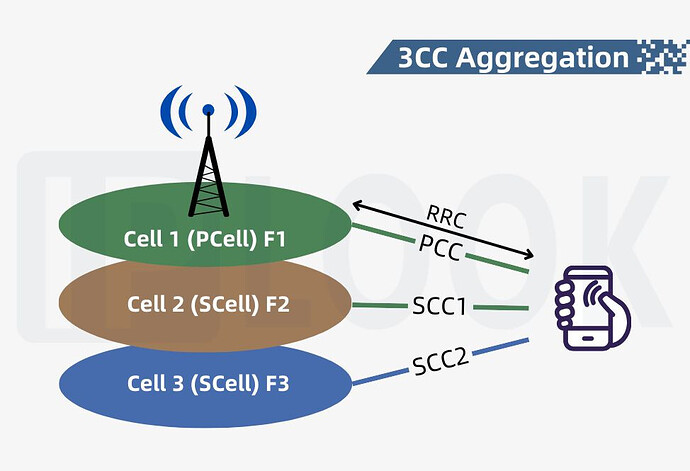-
Carrier Aggregation (CA) technology has emerged since the LTE-Advanced era.
- It aggregates multiple component carriers (CCs) into a single data channel to enhance network data rate. With modulation and coding technologies nearing their limits, one variation of Carrier Aggregation (CA), 3 Component Carrier Aggregation (3CC), comes into play to improve connection speeds by efficiently using valuable frequency resources in the 5G era.
-
Operators combine three different frequency bands to form a larger frequency bandwidth to increase data transfer rates.
- To put it simply, just imagine merging three different highway lanes into one single wider lane to increase vehicle capacity. Notably, 3CC becomes important for 5G Standalone (SA) to unlock their full potential for ultra-fast data speeds.
-
With 3CC aggregation, a UE receives data from three different frequency bands simultaneously, significantly improving download speeds.
- One of these bands acts as the primary component carrier (PCC), while the other two are secondary component carriers (SCCs). The cell on the PCC is referred to as the PCell, and the cell on each SCC is referred as an SCell.
LinkedIn (Source): ![]()
